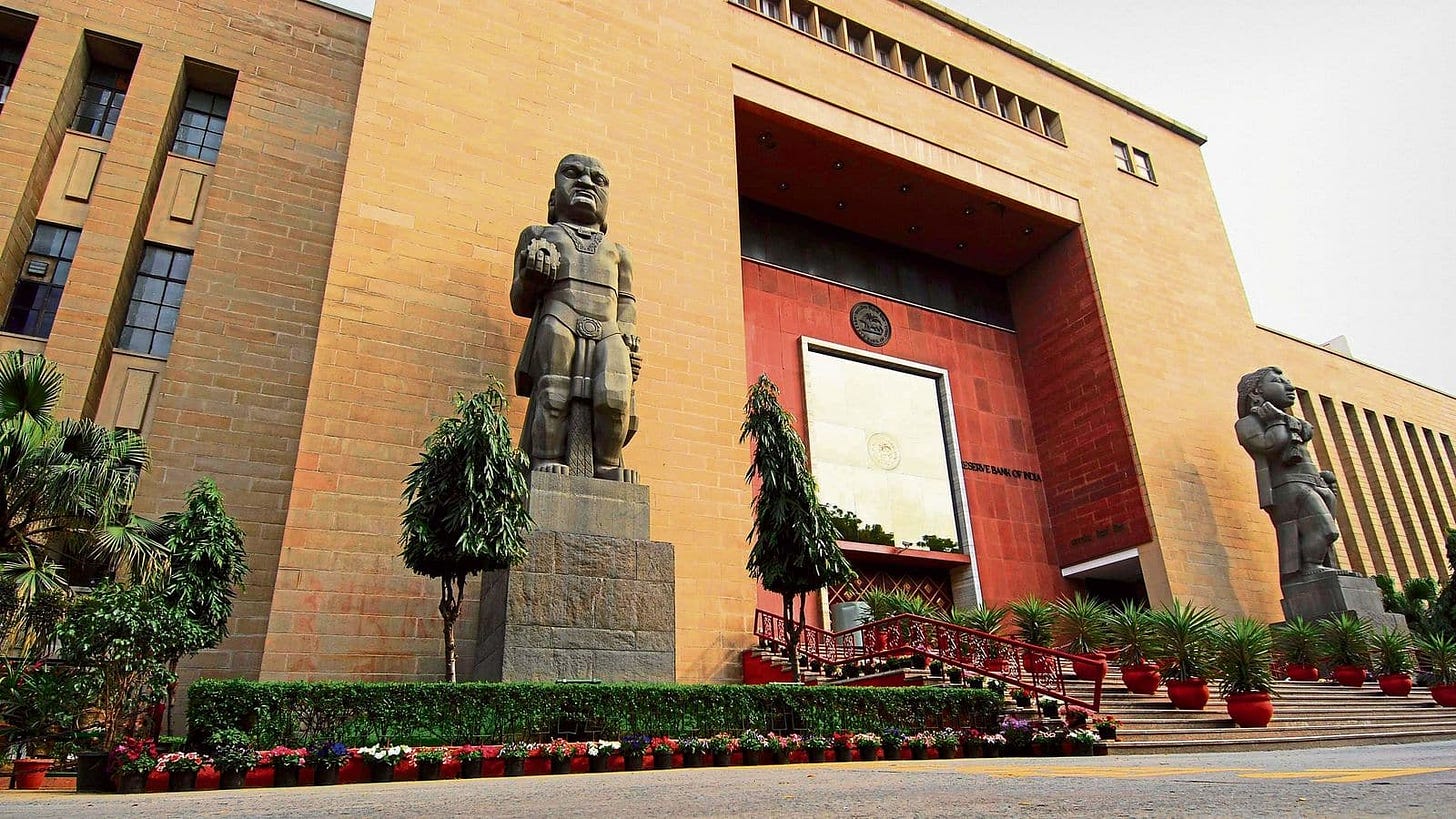From 6.5% to 8%: An Inclusive 8-Point Growth Strategy for India
Economists or Forecasters?
Some leading economists of India often project themselves either as magicians or as astrologers, claiming to possess the ability to accurately forecast India’s growth rate. Recently, former Niti Aayog Vice-Chairman, Mr. Rajiv Kumar, who had resigned in April 2022, made such predictions in a PTI interview, the excerpts of which were carried by the Economic Times1.
Growth Rate Predictions: Grounded or Optimistic?
Mr. Kumar's primary hypothesis is that India is very much capable of escalating its growth rates from the current 6.5% to 8%. He cites various macroeconomic factors to bolster his optimism. However, the data he bases his views upon has already yielded a 6.5% growth rate. It remains unclear how these figures will result in an uptick to 8%, especially in the absence of fundamental changes in laws, policies, or procedures.
Understanding Investment Dynamics
The current saving rates or capital investment rate in India is estimated to lie between 30% to 32%. With every hundred rupees invested producing an output of Rs.10, basic calculations suggest we might need to increase our saving rate by approximately 15%2, if the incremental increase in the GDP is to be achieved. This implies that the saving rate would need to soar to a staggering 45 to 47%, which India has never historically achieved.
The Reality of Public Investments
Given the current scenario where the government's debt is swelling, if not soaring, and the fiscal deficit is barely under control, pinning hopes on massive public investments might be overly optimistic. With a rising middle class driven by aspirational buying, a shift from spending to saving seems unlikely. The moderate inflation that already exists further implies that a sudden RBI 'easy money' policy could risk inflationary pressures and would, therefore, not be likely in foreseeable future.
Achieving the 8% Growth: A New Approach Needed
Are we then to assume that the above growth estimates, shared by other economists, is unattainable? Not necessarily. An 8% growth rate is within grasp but demands more than a 'business as usual' attitude, or relying on macroeconomic parameters that we have already achieved.
Practical Policy Inputs for Growth
Empower the Service Sector: We should actively encourage the services sector, which has a low gestation period, provides high employment, adds significant value, and importantly, doesn’t require huge capital investment. Despite these advantages, it's saddled with some of the highest GST rates. To boost this sector, there should be an across-the-board effort, including a paradigm-shifting deregulation of the public road transport sector and taxi route permits across the country.
Re-evaluate Greenfield Investments: New projects in greenfield investments might appeal to politicians at foundation stone-laying ceremonies. However, the capital required is vast, employment generation limited, and the gestation period often long. While these projects can continue with established industrial groups, our focus should shift more to small and medium industries.
Boost Small and Medium Industries: The small and medium industries in states should receive encouragement to double their turnover within the next three years. Respective governments should proactively engage with them on the support needed to meet this target. Minor capital investments might significantly enhance existing plant efficiencies or add capacity.
Champion Value-added Industries: Industries consuming excessive electricity, such as those using induction furnaces, should be discouraged. Conversely, value-added industries, especially in textiles, threads, weaving, fabrics, and garments – up to branded ones – must receive encouragement. This extends to food-processing industries, indirectly benefiting the stagnant agricultural sector. Necessary infrastructure, like cold chains and storage, should be a priority.
Truly Simplify Business Operations: While "Ease of doing business" slogans resonate in government events, many mid-level businessmen report disproportionate time spent on paperwork and compliance. Despite touted single-window systems in most states, delays persist. This needs streamlining, especially concerning environmental and labour laws.
Revitalise the Real Estate Sector: Real estate can generate vast employment for unskilled and semi-skilled labour, fulfilling housing demand. However, it's one of the most regulated sectors, bogged down from land use changes to RERA registration. Central Government intervention can simplify this, unshackling a sector that could propel growth from 6.5% to 8%.
Diversify Start-up Encouragement: The Modi Government’s push for startups, with schemes like “Digital India” or “Startup India”, is commendable. But new enterprises shouldn’t solely focus on high-tech areas. Low-tech, cost-effective, innovative startups with high returns should also be in the limelight. Public sector loans, even with subsidised rates, have shown to be bottlenecks, emphasising the need for equity-oriented finance over debt.
Rationalise Income Tax Structures: India's tax system is perhaps unique, with corporate tax rates lower than those for individuals or partnerships. This disparity should end, preferably by reducing the rates for individuals and partnerships to corporate levels. Notably, larger corporations often employ financial strategies to further lower their effective rates, including but not limited to long-term capital gains on listed equities, that are taxed at barely 10%.
Inclusive Growth: A Cornerstone of Development
While our nation strives for robust economic growth, it's of paramount importance that the benefits of this progress permeate every layer of our society. It isn't enough for prosperity to be concentrated in urban hubs or amongst the privileged few. The true measure of our nation's growth lies in its ability to uplift every individual, from the urban dweller to the rural farmer, from the mainstream communities to those historically marginalised. This includes women, Scheduled Tribes, Scheduled Castes, and other underrepresented sections like religious and linguistic minorities. Especially deserving of attention are those engaged in traditional arts and crafts, guardians of our rich cultural heritage. Their upliftment isn't merely an economic imperative but a testament to our commitment to the inclusive ideals championed by our Founding Fathers and enshrined in the Preamble to the Constitution.
Looking Ahead: Upholding the Constitution's Vision
For the unity, integrity, and the 'dignity of the individual' underscored and accentuated in our Constitution's Preamble, it's crucial that we achieve robust growth and ensure its benefits reach everyone. Without this, we risk remaining stagnant or even regressing in the coming years. The present growth has been realised in spite of, rather than because of, entities like Niti Aayog and its predecessor, the Yojana Aayog (Planning Commission).
The Indian economy and its entrepreneurs don't need lessons from detached armchair economists. Instead, they require an environment free from stifling bureaucratic controls and tedious paperwork. Given such an environment, their innate drive and passion can propel India to the aspirational 8% growth orbital. Our modest 8-point strategy could serve as a rudimentary roadmap.
https://government.economictimes.indiatimes.com/news/governance/india-needs-and-can-grow-at-8-former-niti-aayog-vice-chairman-rajiv-kumar/104108452
To solve this hypothetical situation, let's break it down step by step.
Step 1: Determine the GDP increase for each scenario.
Let's assume the current GDP is �G.
With a 6.5% growth rate, the increase in GDP = 0.065×�0.065×G = 0.065�0.065G
With an 8% growth rate, the increase in GDP = 0.08×�0.08×G = 0.08�0.08G
Step 2: Determine the additional GDP needed to achieve an 8% growth rate.
Difference in GDP growth = 0.08�−0.065�0.08G−0.065G = 0.015�0.015G
Step 3: Given every 100 rupees invested yields 10 rupees as economic output.
Investment-to-output ratio = 10/100 = 0.1
To find out the additional investment required to achieve the extra output of 0.015�0.015G:
Additional investment (I) = 0.015�/0.10.015G/0.1 = 0.15�0.15G
Step 4: Express the additional investment as a percentage of the GDP.
Percentage increase = (0.15�/�)×100(0.15G/G)×100 = 15%
So, to increase the growth rate from 6.5% to 8%, an additional investment of 15% of the GDP would be required, assuming every 100 rupees invested yields 10 rupees as economic output.









